Cuddle Up With Makoto Shinkai and The Owl In The Rafters

Welcome to a very special Valentine’s Day edition of The Owl in the Rafters!
This week I’m going over the career of an anime director and one-man animation team who took the industry by surprise nearly a decade ago now. This man is none other than Makoto Shinkai, the anime prodigy lauded with the title “The New Miyzaki” by several reviewers. This name may not ring too many bells with Western Audiences, but his debut short film, Hoshi no Koe, aka Voices of a Distant Star, made quite the impression on both Japan and the international film scene back in 2002. Before we get to that however, I’ll go over just a bit of background.
Shinkai attended and graduate from Chuo Univeristy, in the Hachiouji city in Tokyo as a major in Literature. During his time in university he lived in the Saitama prefecture, a place he only gradually grew accustomed to while attending university. His first two short films are set in Saitama, around the neighborhoods Shinkai had grown familiar with. As an entirely self-taught artist, his digital painting skills have have earned him particular praise in the way he breathes a certain air of cozy and almost magically comforting beauty into his scenery.
In 1999, Shinkai began work on a 5minute short film, entitled She and her Cat, which took Grand Prize winner in the 2000 DoGA CG Animation contest. The short film gives us a glimpse into the life of a girl and her cat, but from the cat’s point of view. The composition and writing are simplistic but eloquently presented with a mood that reaches into the back of your head and draws out memories of rainy summer afternoons. Between his ability to play on the sense of familiar everyday nostalgia and his obsession with separation and the inherent fear of loneliness there in his stories always come across with a powerful message.
I should also point out that Shinkai voiced this first short film himself, as the narrative voice of the cat. His unique sense of narrative is something that has become a certain staple of his and he is somewhat notorious for being able to fit a seemingly endless amount of story into as little as 5 minutes by speaking separately in both audio and visual narrative at the same time. His is the sort of work I’d recommend watching once just to experience the story, a second time to focus on the characters, and then a third time only looking at the visuals.
In the brief time between She and Her Cat and his next short film, Shinkai got by working for the game company, Nihon Falcom Corporation, as a graphic designer. Falcom has developed mostly JRPGs and mostly PC titles with a fair number of them being ported to Sony platforms later. Falcom’s biggest flagship title outside of Japan is likely the Ys series, which has been ongoing since 1987. Another major Falcom title, although not well known outside of Japan, is the Dragon Slayer series.
With over a dozen titles to the series name, only a small handful have made it to the US. The first of these was the game Sorcerian, which was released by Sierra in 1990. Dragon Slayer: The Legend of Heroes followed quickly after in 1991 under the par’d down title 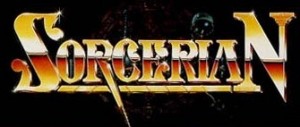 Dragon Slayer, and more recently the 2005 re-release of The Legend of Heroes IV: A Tear of Vermillion for the PSP. The company itself has been publishing PC games since 1982, but since 2008 has been releasing almost exclusively on the Playstation Portable.
Dragon Slayer, and more recently the 2005 re-release of The Legend of Heroes IV: A Tear of Vermillion for the PSP. The company itself has been publishing PC games since 1982, but since 2008 has been releasing almost exclusively on the Playstation Portable.
In 2002 the DVD release of Makoto Shinkai’s 30min short film, Voices of a Distant Star, really took people by surprise. The art and animation are gorgeously done, save for some issues with Shinkai’s human character design, but all the more astonishing when you realize that Shinkai did everything in this short film on his own, from directing, to script, to art, to animation, all in the course of a few years and working off of the now laughably outdated 1999 model Mac G4 computer. The only thing Shinkai didn’t do himself was compose and perform the soundtrack, which was very graciously provided by Tenmon and K.Juno. In the initial DVD launch in Japan even the voice acting was done by Shinkai and his wife as the star crossed lovers, adding a little extra touch of heart wrenching adorableness and admiration over just how much Shinkai really did all by himself.
The story of Voices of a Distant Star follows a pair of young, middle-school lovers at the end of their time in primary education. Set in a near future of 2047 where space travel has given way to exploration of our solar system, the two lovers, Noboru and Mikako find their relationship has hit a snag when Mikako is selected as a pilot candidate in a UN Space fleet exam, a position she gladly accepts. Noboru is thus left on Earth to begin a mundane, normal high school life while Mikako begins her training on the Earth’s moon. Torn apart by the vastness of space the two grade school sweethearts seem to be faced with the same trials as the colonial explorers of the 18th century. Even at such a great distance, the separation is at first only mildly distressing and something that, much like in real life, will take a bit of time to really sink in before the true gravity of the situation and all its implications comes to light.
Thankfully, using a futuristic standard in cellphone technology the two can stay in touch via an extended service range with a light speed connection, but even at a speed of 299,792,458m/sec the solar system is a big place. By the time Mikako’s ship, the Lysithea, reaches the edge of our solar system, the time it takes for her to send a single text one way is nearly 6 months.
The real heart breaker comes when an alien attack on the Lysithea forces the fleet to make a greater than light speed jump into the binary star system of Sirius, the brightest visible star from Earth, as well as the closest. Now, with literally trillions of miles separating the Lysithea from the Earth, a single text from Mikako to Nobouru will take 8 years, 224 days, and 18 hours, one way. As Noboru puts it, “a distance that takes 8 years at the speed of light, is no different than saying ‘forever’.” At this point, Noboru makes the decision to graduate from high school and enroll in the military via standard examination and to board the ship intent on chasing after the distress signals of the now missing Lysithea. But the question is now no longer about if these young lovers can wait for one another but whether or not they will ever see each other again at all. To hammer home this point, the last text Noboru receives is addressed, “to the 24 year old Noboru, from the 15 year old Mikako”.
Now, I’ll stop the summary for two reasons; the first is that I’d hate to spoil everything by getting into the ending, but also because you may be a tad bit lost at this point. If you don’t quite follow this conundrum, it works on a little something called the Twin Paradox, which is paradoxically not actually a paradox at all. I’ll spare you the nittygritty of this particular thought experiment however and give you just the basics.
As Albert Einstein put it: if you were to perfectly synchronize two clocks, and then send one off into space at something near the speed of light and have it return, while the other had remained put on Earth, then as a consequence of spacial relativity, the clock which had traveled would have experienced less relative time to have passed than the clock which had remained stationary on Earth. Apply this to the issue of Mikako and Noboru, and you come to the startling revelation that not only are the two separated by an unfathomable distance, but Noboru is aging at what we would consider a constant normal rate, while Mikako would experience that same period of time Noboru has as nearly instantaneous for herself. You can read up more on the properties of spacial relativity, time dilation, and the Lorentz Factor on your own.
Shinkai’s first big hit was also adapted into a light novel by Waku Ouba and a manga by Mizu Sahara, both under the same title, Voices of A Distant Star, only the latter of which has been translated into English. Oh, and speaking of English; I must insist that you watch Voices of a Distant Star in its original Japanese with English subtitles and avoid ADV’s dub. The “adapted”, not “translated”, script by Steven Foster has quite often been found lacking by critics, and I have to agree. The voice acting of the dubs is mediocre at best, but the script itself omits a good number of fairly key subtexts, as well as substitutes lines and even adds lines where there originally were none.
The next of Shinkai’s films, The Place Promised in our Early Days, aka Beyond the Clouds, The Promised Place
 marks his first and thus far only full length feature film to be released. The 90 minute film details the childhood of three friends, in an alternate time line in the 1990s, where the US occupation of Southern Japan and Soviet control of the North has left Japan geographically and politically divided even after the U.S. occupation is repealed. In the Union half of Japan, two young boys, Hiroki Fujisawa and Takuya Shirakawa, grow up together working in a factory where they assemble guided missiles. With the money they earn they fund a project of theirs to repair and redesign a salvaged aircraft they found which they name the Velaciela. In the midst of their high school lives however they meet Sayuri Sawatari, a young girl whom Hiroki falls in love with, and whom the boys promise to take with them to Hokkaido on the finished Velaciela one day.
marks his first and thus far only full length feature film to be released. The 90 minute film details the childhood of three friends, in an alternate time line in the 1990s, where the US occupation of Southern Japan and Soviet control of the North has left Japan geographically and politically divided even after the U.S. occupation is repealed. In the Union half of Japan, two young boys, Hiroki Fujisawa and Takuya Shirakawa, grow up together working in a factory where they assemble guided missiles. With the money they earn they fund a project of theirs to repair and redesign a salvaged aircraft they found which they name the Velaciela. In the midst of their high school lives however they meet Sayuri Sawatari, a young girl whom Hiroki falls in love with, and whom the boys promise to take with them to Hokkaido on the finished Velaciela one day.
The Velaciela is never finished however. After Sayuri mysteriously vanishes from school the boys begin to drift apart. Three years later Takuya is a promising young physicist working with a U.S. sponsored lab, studying the Union’s mysterious tower project. Meanwhile, Hiroki is living a miserable life in Toyko, having succumb to a downward spiraling depression ever since Sayuri’s unexplained disappearance when a letter from Sayuri suddenly arrives 3 years late, but offers Hiroki a lead as to the whereabouts and reasons behind her disappearance. His attempts to track her down lead him to cross paths with Takuya again after 3 years, and the two must deal with their conflicting interests and a choice that will either save Sayuri’s life or threaten the state of peace in Japan. One way or another, the Velaciela must be finished at last and the two must venture to the Union’s tower to fulfill their childhood promise.
Once again, Shinkai builds an astonishingly gorgeously subtle sci-fi world closely mirroring modern Japan that draws a strange mix of nostalgia and a certain air of the fanciful from the audience’s imagination and memory. His character designs this time around, having been professionally handled by CoMix Wave Inc. undergo a great deal of renovation, patching up one of his biggest short comings in Voice of a Distant Star while maintaining and perhaps improving his truly stunning set work. Staying true to form, Shinkai continues to narrate his stories with a level of detail that seems to warp time, creating the same bizarre effect that made the 30 minute Voices of a Distant Star seem like a 90 minute feature film, to make The Place Promised in Our Early Days feel almost too long. However, if you sit down expecting and indeed looking for an engrossing and detailed drama then Shinkai is never one to disappoint, but in the case of The Place Promised… in particular among Shinkai’s work, you really ought to know just what you’re getting yourself into before you try to watch it.
Like with Voices of A Distant Star, The Place Promised in Our Early Days was released in English by ADV, and adapted into both a novel and manga format, in Japan. Unfortunately however, neither the novel nor the manga for The Place Promised in Our Early Days have seen any signs of international release.
Pausing for just a moment, we again take a look at Shinkai’s work outside of his own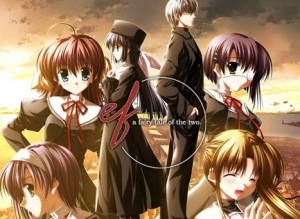 stories. In 2003, he directed and animated the music video for the Hiromi Iwasaki song, Egao, and at various points during the early 2000s he did animation work on a number of visual novels and erogames for the company Minori, including Bittersweet Fools, Wind -A Breath of Heart-, and the original ef -A Fairy Tale of the Two- VN that was later adapted into a manga series, lightnovel and the 12 episode long animated series, ef -A Tale of Melodies-. Also, in my Satoshi Kon Memorial, I mentioned briefly the NHK sponsored Ani-Kuri 15 project that collected fifteen 60 second short films by various well known animation directors in Japan. Among those, episode 11, entitled A Gathering of Cats was directed by none other thank Makoto Shinkai.
stories. In 2003, he directed and animated the music video for the Hiromi Iwasaki song, Egao, and at various points during the early 2000s he did animation work on a number of visual novels and erogames for the company Minori, including Bittersweet Fools, Wind -A Breath of Heart-, and the original ef -A Fairy Tale of the Two- VN that was later adapted into a manga series, lightnovel and the 12 episode long animated series, ef -A Tale of Melodies-. Also, in my Satoshi Kon Memorial, I mentioned briefly the NHK sponsored Ani-Kuri 15 project that collected fifteen 60 second short films by various well known animation directors in Japan. Among those, episode 11, entitled A Gathering of Cats was directed by none other thank Makoto Shinkai.
Skipping ahead to 2007, we find the biggest international title Shinkai has released thus far, the 3 part collection of short films entitled, 5 Centimeters Per Second. The title is derived from a comment in the first episode where one of the characters mentions that a cherry blossom falls at 5 cm/sec. The comment it self is at first a part of an innocently cute and endearing conversation, but as the short film goes on, the falling of the cherry blossom becomes a symbol of the passage of time, and that speed becomes the speed at which lovers drift apart.
As Shinkai’s most recent work after really establishing himself in the broader anime market with The Place Promised in our Early Days, 5cm/sec has easily garnered the most attention from the public, with some unfortunate backlash. Given the stunning quality of his set pieces, his films in general have been deemed “background porn” by more affectionate critics, and given their prominence in screen time, 5cm/sec has even been sarcastically nicknamed “5 Wallpapers Per Second”.
Bringing to the forefront Shinkai’s ongoing thematic obsession with trains, the first of the three short stories, Cherry Blossoms, tells the story of a pair of young middle school sweethearts, Takaki Tono and Akari Shinohara, as their relationship is tested against the gaps of time and space.
Having both been the quiet and introverted types who preferred the library to the playground, they bonded quickly over the few years they knew each other in person, until they found themselves drifting further and further after Akari’s family moves to Tochigi in central Japan. The two keep in contact through written letters until one day Takaki’s family must begin moving once again, this time to Kagoshima, in the far Southern region of Japan.
In the last week he has within reach of Akari, Takaki resolves to visit Akari in Tochigi: a trip by train that will take him nearly 4 hours in good weather. While Akari waits for his arrival at 7:30PM, Takaki is faced with a crushing desperation when he finds himself stranded on the tracks due to heavy snow.
Alone on the dead silent train he begins to wonder how Akari is doing, waiting for him hours after his intended arrival time, and indeed if he’ll ever be able to see her again if he misses his chance now. The sense of miserable isolation, stuffy claustrophobia, and endless stretch of time that a delayed train can bring is taken to it’s most depressingly logical extremes as Takaki finds himself helplessly stuck while Akari waits for him in the cold.
In the second segment, Cosmonaut, we’re shown Takaki as a high school student in Tanegashima, home to the Tanegashima Space Center, through the eyes of his close friend and secret admirer, Kanae Sumida. We watch as Kanae tries to convey her feelings for Takaki, only to find her feelings unrequited and seemingly entirely unnoticed by Takaki. As time goes by, Kanae gathers up the courage to confess her love to Takaki in a more direct manner, but begins to notice Takaki writing constant e-mails to some unknown person. Once her curiosity leads her to investigate further she starts to realize why Takaki is so often lost in thought, starring off at some distant place with his mind in a world all its own. In the end, she comes to the conclusion that Takaki has dedicated himself to something much deeper than she can give him and resolves to leave her true feelings for him unspoken.
Finally we come to the self titled 3rd and final episode, 5 Centimeters per Second. Skipping ahead in time once again, the story resumes in 2008, with Akari engaged to another man, and Takaki abandoning his professional career from a worsening depression, neither having seen each other since the night they spent together before Takaki moved in middle school.
The two share a dream of that last night together where they promised to watch the falling cherry blossoms together one day. By the end of the story the two meet again, in an unexpected twist of fate, and in an instant among the falling cherry blossoms they manage to overcome the anxieties that had been left between then so many years ago, breaking Takaki free from his chains of depression once and for all so that he can get on with his life.
Again, CoMix Wave Inc. provides Shinkai with a remarkably talented staff of animators and artists to keep up with his beautiful re-envisioning of the mundane everyday world. This also marks the first time since his debut with She and Her Cat, that Shinkai has dropped the sci-fi flare entirely and told his story in a real world setting of Japan between the 1990s and 2000s. His sense of direction stays nearly unchanged, which is hardly a problem given his astonishingly vivid sense of design, while his character designer from The Place Promised in Our Early Days, Ushio Tazawa, is switched out in favor of one of the key animators from Shinkai’s previous film, Takayo Nishimura. The new shuffling of the staff makes for a nice change in the look and feel of the characters and their emotions throughout the film, and I personally feel that Nishimura’s designs have been the best within Shinkai’s work so far.
I forgot to mention it earlier, but the musical composer Tenmon, a personal friend of Shinkai’s from their work together with the game companies, Minori and Falcom, has provided the musical score for all of Shinkai’s work, and done a remarkable job capturing the quiet, homely, and nostalgic childhood-like feel of Shinkai’s work as well as the dramatic, depressing, and more often than not genuinely heartbreaking moments. It’s no exaggeration to say that Tenmon’s work on Shinkai’s soundtracks accounts for a good portion of the atmosphere that has made Shinkai famous, or perhaps infamous among his fans as a king of tragic romance. (romantic tragedy?) In 2009, the Eminence Symphony Orchestra, based in Sydney Australia, even released a 13 track album entitled PROMISE covering key songs composed by Tenmon from Shinkai’s three major films.
Finally, we come to Shinkai’s most recent project, Hoshi o Ou Kodomo translated literally as “Children Who Chase Stars” but alternately titled in English as Children Who Chase Lost Voices from Deep Below. Shinkai himself has stated that like his other films he intends for the story of this next film 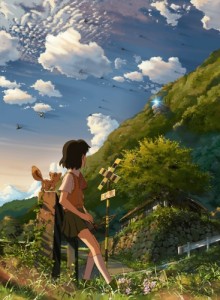 -the one with the egregiously long title that I’ll avoid needlessly repeating- he will be returning to the subject of separated lovers, but unlike his other films he has said that he wants to address not only a tragedy between two characters but the details of how they get over it and move on with their lives and where they go from there. This refreshing expansion on his own themes makes for an interesting new experience, or so I hope, as the idea of a more hopeful resolution seems less stifling than the ends of Shinkai’s other work. Also unlike some of Shinkai’s personal work, this next story will branch into the realm of adventure, perhaps swapping some of Shinkai’s usual heavy urban and abandoned suburban settings in exchange for more a more diverse mix of rural locales.
-the one with the egregiously long title that I’ll avoid needlessly repeating- he will be returning to the subject of separated lovers, but unlike his other films he has said that he wants to address not only a tragedy between two characters but the details of how they get over it and move on with their lives and where they go from there. This refreshing expansion on his own themes makes for an interesting new experience, or so I hope, as the idea of a more hopeful resolution seems less stifling than the ends of Shinkai’s other work. Also unlike some of Shinkai’s personal work, this next story will branch into the realm of adventure, perhaps swapping some of Shinkai’s usual heavy urban and abandoned suburban settings in exchange for more a more diverse mix of rural locales.
Reprising his role as character designer from 5 Centimeters Per Second is Takayo Nishimura, taking on a particularly Hayao Miyazaki inspired art style. HERE is a link to the official home page for the film if you care to take a peek. If you draw your attention to the top left corner of the page you’ll find a list of buttons, the first of which will open up the trailer video in its highest available online quality. The second from the top is a short plot synopsis, which I’m sure will be of little help to those of you who can’t read Japanese. The third from the top is a list of characters and descriptions. The rest are things like details on a postcard contest and theater events concerning the film debut in Japan, as well as a news feed for the film’s marketing events: all of little use to Western audiences. The bottom most link at the moment however is a series of interviews with voice actors.
The lead actress will be Hisako Kanemoto, the young up and coming voice behind the heroines of recent tiles such as So-Ra-No-Wo-To, Sekirei ~Pure Engagement~, Shinryaku! Ika Musume, and Kore wa Zombie Desu ka.
Playing opposite her in a dual role will be Irino Miyu, the young but well rounded voice actor who played major roles in the casts of animated series like D.N.Angel, Tsubasa -RESERVoir CHRoNiCLE-, Air Gear, Gundam 00, Darker than Black, Birdy the Mighty DECODE, as well as several others.
And then the key supporting role will be played by veteran voice actor Kazuhiko Inoue, best known for his key roles in classic anime titles such as the original Candy Candy, the 1979 remake of Cyborg 009, Go Lion, Ginguiser, Aoki Ryusei SPT Layzner, Gundam Zeta, Oishinbo, and Legend of Galactic Heroes, as well as many modern roles of lesser consequence like Hatori Sohma in Fruits Basket, Eiri Yuki in Gravitation, and Hatake Kakashi in Naruto. Once again, the film will be produced by studio CoMix Wave Inc. and is scheduled for release in May of this year.
Now, with all that’s been said I hope you’ve had your interest piqued enough to look into one, if not all of Makoto Shinkai’s films. If you are any fan of romance then Shinkai’s work is an absolute must, and if you’re the type who dislikes the gushy, lovey-dovey, “happily ever after” tendencies of romance, then I’ll still recommend Shinkai to you because maybe, just maybe, his subversion of the normal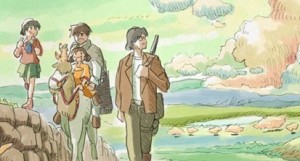 fairytale-like romance could be just the twist you’re looking for. Even putting the story in the back seat, if you’ve any appreciation for ingenuity in animation, or rare talent in digital painting, then Makoto Shinkai’s work is a must see. And perhaps you’ll even be looking forward to the release of Children Who Chase Lost Voices from Deep Below with me this May!
fairytale-like romance could be just the twist you’re looking for. Even putting the story in the back seat, if you’ve any appreciation for ingenuity in animation, or rare talent in digital painting, then Makoto Shinkai’s work is a must see. And perhaps you’ll even be looking forward to the release of Children Who Chase Lost Voices from Deep Below with me this May!



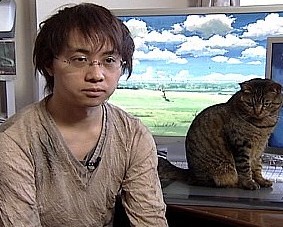
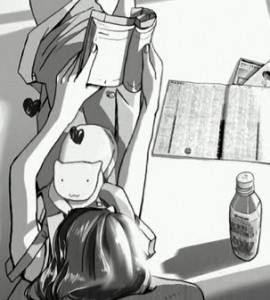


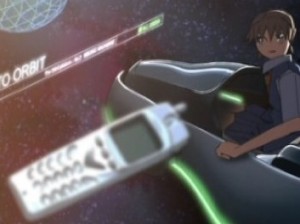
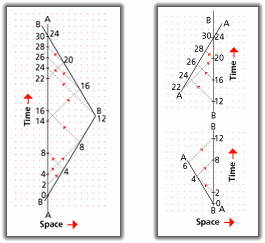

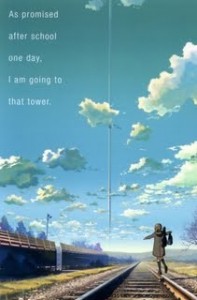


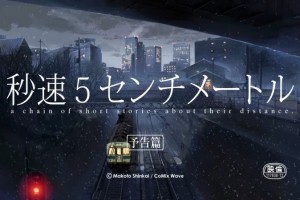


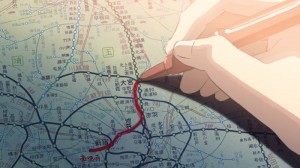

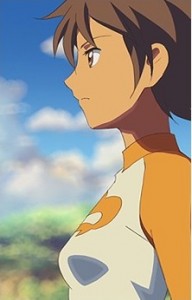
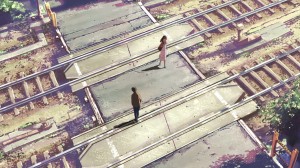

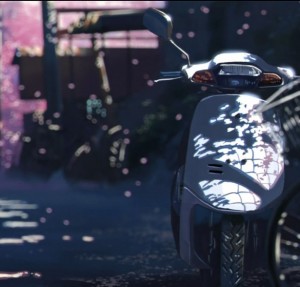
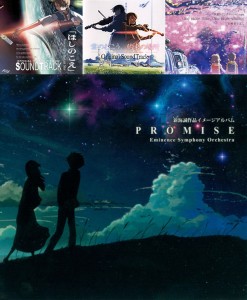
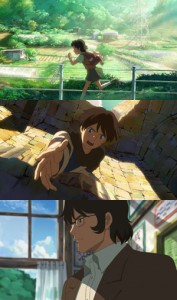


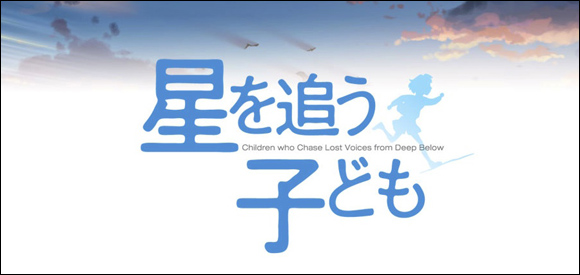













Man, this guy makes good Anime. From how you summed up some of the storylines from his work, I REALLY want to see them, especially “Voices of a Distant Star” got me the most.
Voices of a Distant Star was excellent. Here’s hoping that Children who Chase Lost Voices will be as good! ^ ^
Everything that man has made has made me cry… Talk about soul-crushing. She and Her Cat is probably the only piece that didn’t reduce me to a sobbing mess.
I’ve seem much of his work except for that earliest 5min short. Definitely good stuff. Amazed he did all the animation on the earlier works, I’d love to have that skill.
I really can’t properly express just how excited I am for this new movie. The fact that Shinkai is working with a very Miyazaki-esque art style in terms of both characters and setting has me curious. From the trailer alone, things look so much brighter and full of wonder, where as his previous works border on the cynical.
If he really does shift into Miyazaki mode and pulls off an uplifting ending, that ought to be enough show of diversity that he may find a real place in the industry as a serious director and not just that one sad looking guy with the cat who writes romance stories and painting trains and cityscapes all day.
[…] for films like Fullmetal Alchemist: The Sacred Star of Milos, Trigun: Badlands Rumble, and Makoto Shinkai‘s Hoshi O Ou Kodomo: The Children Who Chase Lost Voices From Deep Below. There were also a […]
[…] film serves to widen the range of his talent and appeal significantly. His background and career I’ve covered before, and I will in fact cover again in some of the Q&A sessions he was in at Otakon this year, so […]
[…] was relatively unknown before they picked up young underdog director, Makoto Shinkai, whom I have covered once already, and recently a second time for the English premiere of his latest film at Otakon 2011. This is not […]
[…] year’s Valentine’s Day article. Last year I covered the career of anime film director Makoto Shinkai and his line up of gut wrenching, heart breaking, and eye watering romance films, but this year […]
I just saw The Place Promised in Our Early Days and it is quite a good film…